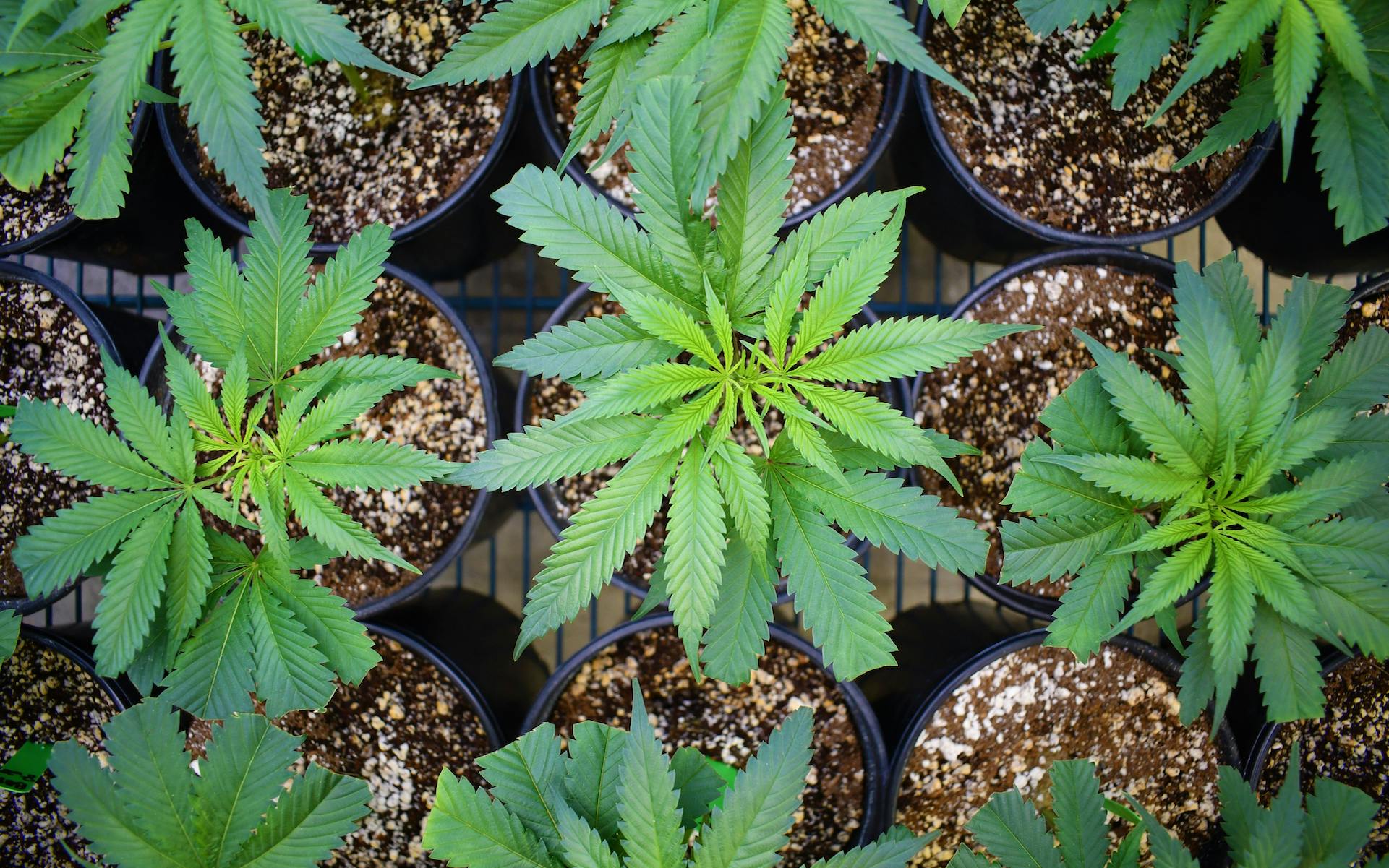Cannabis cultivators need a clean, reproducible growing process that can cater to high demand and create consistent product.
Enter large-scale, plant tissue culture propagation. Using practices adopted from orchid farming, plant cells are taken from a mother plant and grown using a specific regimen of nutrients, hormones, and light under sterile conditions on a nutrient culture medium.
The tissue culture process involves test tubes, sterile labs, and technicians wearing clean suits, so it’s a far cry from the country farm atmosphere. But if any crop is accustomed to artificial conditions it’s cannabis, and tissue culture holds a lot of promise for growers who want consistency and vigorous, disease-free plants.
However, it’s not a simple or easy process and definitely not cheap. Here we’ll cover the process, its advantages, and disadvantages.
How does tissue culture work?
There are four basic steps to the tissue culture process.
- Initiation. Small pieces of plant tissue (explants) are cut from the mother plant, sterilized with anti-microbial chemicals, and placed on a sterile jelly containing nutrients and plant hormones. The hormones make plant tissue cells divide rapidly, producing many cells which form a shapeless lump of mass called a callus.
- Root formation. The callus is then transferred to another jelly with plant hormones that stimulate the callus to develop roots; this callus with developed roots is then put in a third jelly containing different hormones to stimulate the growth of shoots.
- Formation of plantlets. The callus, now with roots and shoots, separates into tiny plantlets. In this way, many tiny plantlets are produced from just a few original plant cells.
- Transfer of plantlets. Once the plantlets develop to a height of 5-6 inches, they are hardened and transferred to soil. During hardening, plantlets are kept under reduced light and high humidity. Through hardening, the plantlets are better able to tolerate the harsh environments outside the lab.
Advantages of tissue culture
Why would this method replace conventional methods of cloning cannabis? There are numerous advantages:
- Cells can be made clear of viruses and infections, becoming cleaned stock.
- Resulting plants are more vigorous, disease-free, pest-free, and produce higher yields.
- Production doesn’t require seeds or pollinators, so the initial steps can be easier than traditional growing.
- Like clones, tissue-cultured plants are 100% female, so there’s no need to cull rogue males.
There’s less environmental waste with this process. According to Fred Green, a horticultural consultant in Princeton, Massachusetts, “Eliminating the mother room reduces the need for a significant amount of water because you don’t have to keep those plants alive. And in terms of energy, the number of watts per square foot required for tissue culture is just a fraction of what it is to keep a mother plant growing and healthy.”
Additionally, the space required is far less than growing seeds, mother plants, or clones. “In an average facility, 15-17% of space is used for mother plants and vegging clones. If you use tissue culture, almost all of that can be converted into flower production,” said Green.
Disadvantages of tissue culture
The tissue culture process is not quick or easy. Plants grown in a lab can’t just immediately go into a greenhouse or field; it’s a delicate process.
It can cost hundreds of thousands of dollars to set up a tissue culture operation. It requires highly skilled technicians, and in the current market, producers are largely untrained. Clean rooms are expensive to build and run, and they need special equipment to filter air to reduce the risk of contamination.
About that contamination—in the beginning of their lives, plantlets grown from tissue culture are much more vulnerable to disease than plants grown from seed or clone. Spores, bugs, and viruses can quickly wipe out a crop. According to Green, “All tools have to be sterilized between each use. If you get disease spore on a tweezer and then you handle 20 plants, all 20 of those plants will certainly have disease.”
While plantlets grow fast, putting a new crop into a clean stock program can take years. For example, it takes a minimum of six to nine months to get a new strain clean and stable enough to go into production. It can then take years to get it into large-scale production with thousands of plants.
Marketing for tissue culture often claims that growers will have consistent outcomes because plants start out disease- and pest-free. According to Jeremy Plumb, Director of Production Science at Pruf Cultivar in Oregon, that’s only the beginning of the journey. You still need good growers and a stable growing environment to control temperature, lighting, humidity, nutrients, and more. “Unless you can execute those variables, it’s very unlikely tissue culture is going to make any difference,” said Plumb.
Waiting for the market to expand
Today, very few companies in the US are jumping into tissue culture. This is partly because the legal market is still young and businesses are still figuring things out.
Because markets are limited at the state level, the consumer base is small, making this practice unviable—but California may be an exception. Green estimates that only a small amount of cannabis growers in the US use the process, but in Canada, where the legal market is the entire country, it’s much more. “Canada is much further ahead than the US because you can ship it anywhere in the country.”
So until the market expands, you may want to keep your aspirations for this high-tech process on hold.





